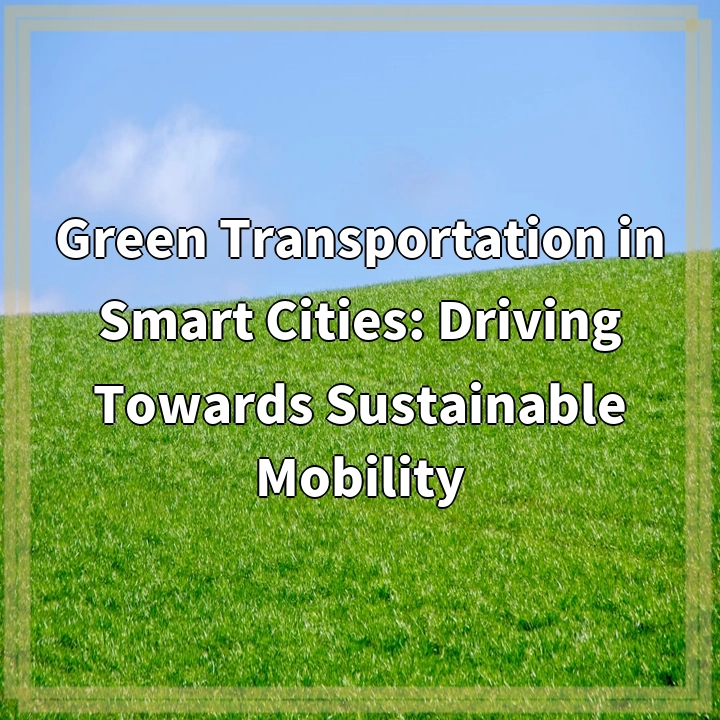
What is Green Transportation in Smart Cities?
Green transportation in smart cities refers to the use of sustainable, eco-friendly modes of transportation within urban areas that are equipped with smart technologies. It aims to address the growing concerns of pollution, traffic congestion, and carbon emissions associated with traditional transportation methods.
Real-World Problems
While green transportation in smart cities is a promising solution for sustainable mobility, it does face some challenges and real-world problems that need to be addressed:
1. Infrastructure Development:
One of the major hurdles is the need for comprehensive infrastructure development. This includes establishing charging stations for electric vehicles, creating dedicated lanes for cyclipsts and pedestrians, and implementing smart traffic management systems. Without adequate infrastructure, the adoption of green transportation options may be limited.
2. Behavioral Changes:
Encouraging individuals to shift from private car ownership to using public transit, shared mobility services, or active modes of transportation requires significant changes in behavior. Overcoming the resistance to change and promoting the benefits of green transportation can be a challenge, especially in societies heavily reliant on private vehicles.
3. Funding and Financial Incentives:
Green transportation initiatives often require substantial investments and financial incentives to encourage their adoption. Governments, city planners, and transportation authorities need to allocate appropriate funding and provide incentives such as subsidies, tax breaks, or reduced fares to make green transportation options more accessible and affordable.
4. Integration of Smart Technologies:
The successful implementation of green transportation in smart cities relies heavily on the integration of smart technologies. This includes real-time data collection, analysis, and the use of advanced algorithms for efficient traffic management, smart parking systems, and seamless integration of different modes of transportation. The complex integration process may pose technical challenges that need to be overcome.
By addressing these real-world problems, cities can pave the way towards sustainable mobility and a greener future. Green transportation in smart cities offers numerous benefits such as reduced emissions, improved air quality, and enhanced livability for urban dwellers. It is a crucial step in creating more environmentally-friendly and sustainable cities.

Solutions for Green Transportation in Smart Cities
To overcome the real-world problems associated with green transportation in smart cities, several solutions can be implemented:
1. Infrastructure Development:
Cities should prioritize the development of comprehensive infrastructure, including electric vehicle charging stations, dedicated bike lanes, and pedestrian-friendly pathways. Additionally, smart traffic management systems can optimize traffic flow and reduce congestion.
2. Behavioral Changes:
Efforts should be made to raise awareness and educate the public about the benefits of green transportation. Implementing behavioral change campaigns, providing information about alternative modes of transportation, and offering incentives can encourage individuals to adopt sustainable mobility options.
3. Funding and Financial Incentives:
Governments and city authorities should allocate sufficient funding for green transportation initiatives. Financial incentives such as subsidies for electric vehicles, reduced fares for public transit, and tax benefits can make sustainable transportation options more affordable and attractive for individuals.
4. Integration of Smart Technologies:
Cities can invest in advanced smart technologies to integrate various modes of transportation seamlessly. Real-time data collection, analysis, and the use of intelligent algorithms can optimize traffic management, improve parking systems, and enhance overall efficiency.
By implementing these solutions, cities can overcome the challenges associated with green transportation in smart cities. This will result in reduced pollution, improved air quality, and increased quality of life for urban residents. Embracing sustainable mobility is vital for creating greener and more livable cities for the future.















